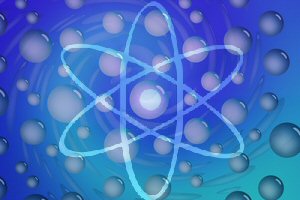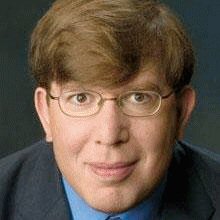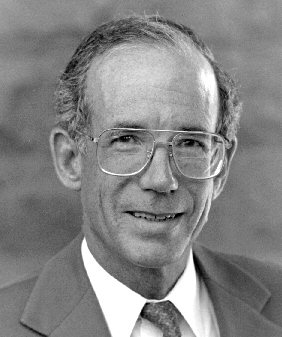ORNL Nuclear Cavitation – Reflections on a Scientific Battle (Part 12)

Oak Ridge Nuclear Cavitation Confirmation
July 29, 2013 – By Steven B. Krivit –
This is Part 12, the final part of “2001 Oak Ridge Nuclear Cavitation Confirmation Uncovered.”
This is a New Energy Times Special Report. The first part of this series published on July 18, 2013.
Nuclear Cavitation Experiments: Difficult to Build, Easy to Test
Nuclear cavitation experiments are difficult to repeat and reproduce. The most challenging aspect is the construction of the glass chamber because it is handcrafted, requiring specialized skill and experience. Although the glassblowers at Oak Ridge had a general concept of the design requirements, their ability to create a working chamber was hit-or-miss. If the glass was too thick, it might not have the required elasticity to flex during the bubble explosions. If the glass was too thin, it might break easily. There were other factors, too, as Richard Lahey explained to New Energy Times on May 25, 2007.
“The problem is — and unfortunately it’s easy to look back and see it; at the time, we weren’t aware of it — that each one of these test [chambers] is handcrafted,” Lahey said. “[The drawings do not specify] the glass thickness and the tolerance and the gap thicknesses, etc. The way Rusi and Colin worked is they had built different test [chambers], and so [when] they got one that worked, there were lots more, 30 or 40, that didn’t work.
“No matter how careful the glassblower is, each test [chamber] will come out differently. It’s very sensitive. When we did it at Oak Ridge, we were happy just if we could get results that were repeatable for us. We weren’t thinking about [replication.]
“Even Rusi will tell you, when he builds a test [chamber], he never knows if it’s going to work. He may have to build one and then build another until he finally gets one working, and that’s not the way [other] folks like to work.”
Although the construction of working chambers was unreliable, testing the chambers for sonoluminescence flashes and neutrons was remarkably easy and straightforward. After the Taleyarkhan group’s paper published in Science, it continued performing more experiments at Oak Ridge. In May 2003, as the group was preparing the next paper, which eventually published in Physical Review E in 2004, the researchers recorded live videos of the nuclear cavitation experiments to show to Lee Riedinger, the deputy director for science and technology at ORNL, and Glenn Young, the director of the Physics Division.
The videos show the simplicity of turning the effect on and off at will when the system is working optimally. As Taleyarkhan wrote in an e-mail to New Energy Times, his group has explained the many factors required to get the experiment to work properly. Two of the documents that discuss these factors are a supplement to his group’s 2006 Physical Review Letters paper and a March 1, 2006, DARPA meeting slide presentation.
“As we have cautioned repeatedly,” Taleyarkhan wrote, “the behavior can drop or increase abruptly by orders of magnitude if the characteristics of the implosive collapse of bubble clusters deviate during operation, if items such as debonding of epoxy with the PZT driver takes place or if liquid or vacuum is lost or added.”
The videos also show that Shapira and Saltmarsh’s demand for coincidences was irrelevant. Last, the videos show what is expected in science: a variety of control runs.
The first video shows experimental runs performed with deuterated acetone. The second video shows runs performed with normal, or natural, acetone.
Video of Deuterated Acetone Experimental Runs
| Run 1 – 01:00 | Deuterated acetone and cavitation on. Analyze for neutrons. (Observed) |
| Run 2 – 02:27 | Deuterated acetone and cavitation off. Analyze for neutrons. (Not observed) |
| Run 3 – 03:16 | Deuterated acetone and cavitation on. Analyze for neutrons. (Observed) |
| Run 4 – 03:37 | Deuterated acetone and cavitation on. Analyze for sonoluminescence flashes. (Observed) |
| Run 5 – 05:00 | Deuterated acetone and cavitation off. Analyze for sonoluminescence flashes. (Not observed) |
| Run 6 – 06:20 | Deuterated acetone and cavitation on. Analyze for excess gamma. (Minimally observed) |
| Run 7 – 07:43 | Deuterated acetone and cavitation off. Analyze for excess gamma. (Not observed) |
Video of Normal (Natural) Acetone Experimental Runs
| Run 1 – 00:28 | Normal acetone and cavitation on. Analyze for sonoluminescence flashes. (Observed) |
| Run 2 – 01:38 | Normal acetone and cavitation off. Analyze for sonoluminescence flashes. (Not observed) |
| Run 3 – 02:40 | Normal acetone and cavitation on. Analyze for neutrons. (Not observed) |
| Run 4 – 04:00 | Normal acetone and cavitation off. Analyze for neutrons. (Not observed) |
| Run 5 – 05:03 | Normal acetone and cavitation on or off. Analyze for excess gamma. (Not observed) |
Science Gone Astray
The Shapira-Saltmarsh case offers insights into the inner workings of science and science journalism. Perhaps the most prominent insight is the contrast between the application of the scientific method and the process of scientific skepticism. Scientific skepticism involves the inquiry into reasonable alternative explanations for new and possibly extraordinary claims. Proper scientific skepticism does not involve wild speculation of highly improbable and untested explanations.
Shapira, in his Dec. 19, 2001, document, without intending to, wrote how the Taleyarkhan group followed the scientific method.
“I think the authors are definitely entitled to their interpretation,” Shapira wrote. “I, for example, cannot come up with a credible mechanism that can explain why [they] have this excess [of neutrons] only when they cavitate cold deuterated acetone, except for the D-D fusion events during implosion collapse as suggested by the authors.”
Shapira could not identify a specific error of experimental protocol or analysis to refute the Taleyarkhan group’s conclusion. Instead, Shapira confirmed excess of both neutrons and tritium, neither of which he or Saltmarsh could scientifically explain away, as he wrote in his Dec. 19, 2001, document.
“The paper presents a convincing case of excess tritium productions when cavitation is induced in cold deuterated acetone; the methods and procedures in collecting these data have been independently reviewed by relevant ORNL expert in the field,” Shapira wrote.
Shapira and Saltmarsh said that they attempted their own experiment, but they didn’t. They measured confirmatory data and later publicly said that they did not measure confirmatory data. Science fraud — science research misconduct performed with the intent to deceive — is destructive to the practice of science; it wastes time and money, and it weakens public confidence. Science research misconduct occurs when a scientist claims confirmation in the absence of supportive data or when a scientist claims disconfirmation in the presence of supportive data.
Science Journalism Gone Astray

Charles Seife
For 13 years, Shapira and Saltmarsh’s published papers and news quotes created the widespread impression that they disconfirmed the Taleyarkhan group’s nuclear cavitation research. The leader of the news pack that perpetuated this falsehood was Seife, who had resigned as a reporter for Science in 2005 and became a journalism professor in New York University’s Department of Journalism.
Seife’s 2008 book about fusion research summarizes his account of what happened at Oak Ridge:
[Begin Excerpt] Calling for other scientists to repeat an experiment before publication was an extremely unusual step, and it likely struck Taleyarkhan as a vote of no confidence, but Oak Ridge insisted. The lab seemed determined to avoid becoming the center of another cold-fusion fiasco.
So, with Taleyarkhan’s assistance, Shapira and Saltmarsh set up an exact copy of the bubble fusion experiment, except for one detail: They used a bigger and better neutron detector. Not only was it physically larger (making it more sensitive, because more neutrons could strike it), but it also had more sophisticated electronics. Unlike Taleyarkhan’s detector, it could tell the difference between neutrons and gamma rays.
When Shapira and Saltmarsh analyzed the data they had gathered, the results were damning. They found no sign of fusion, no evidence for neutron emission from the bubbling deuterated acetone. They did not try to verify Taleyarkhan’s findings of tritium but noted that, if the tritium had been produced by fusion, the bubbling solution should have produced a million neutrons per second, and that level of activity should easily have been picked up by the neutron detector.
According to their equipment, though, nothing was happening in the bubbling liquid, just the expected number of chirps caused by stray neutrons produced by cosmic rays and the like. (And since the team members were making bubbles by zapping the tank with neutrons, a heck of a lot of those particles were skittering about in the background.) [End Excerpt]
As readers of this report know, nearly everything Seife wrote in these two paragraphs is wrong. Seife concluded his summary with a reflection of his experience as a reporter for the news department of Science. In his opinion, Science Editor -in-Chief Donald Kennedy, and the peer reviewers who supported the publication of the Taleyarkhan group’s nuclear cavitation paper, had made an error in judgment.
“The bubble fusion story was about more than a scientific paper,” Seife wrote. “It had become a story about the way science is done – and how the scientific peer-review process sometimes fails.”
Seife had barely scratched the surface about how science is done, particularly when the stakes are high.
Donald Kennedy’s Reflections on a Scientific Battle
Kennedy navigated a difficult situation during the height of the Oak Ridge conflict. He rebuffed Garwin and Happer’s attempts to censor the Taleyarkhan group’s paper. On March 12, 2002, Science published a letter from Robert H. Austin, a professor and colleague of Happer’s at Princeton University. The title of Austin’s letter was “Irresponsible Journalism.”

Don Kennedy
“I certainly agree with Robert Park and others that Science has acted irresponsibly here,” Austin wrote. “Science knew that the result was controversial in the sense that it was unlikely to be correct and that, in fact, an internal review by ORNL had cast serious doubt on the submitted paper. This has to be taken seriously.
“The general press and the public at large are very gullible and are easily influenced by sensationalist articles that offer ‘amazing’ results that are too good to be true. I am disappointed by the way that Science has handled this matter and has pushed this extremely dubious result.”
On March 3, 2006, Kennedy published a letter in Science in which he reflected on some of his most challenging situations as editor.
“I’ve had two experiences during the past six years [in which] I found myself urged by distinguished senior scientists not to publish a paper from another group that we were evaluating,” Kennedy wrote. “This is a surprising departure from the prevailing idea in the scientific community that resolution through journal-mediated debate is preferred to censorship.
“In 2002, we were considering a paper from investigators at Oak Ridge National Laboratory (ORNL) that provided evidence for nuclear fusion occurring in rapidly collapsing bubbles in deuterated acetone. ORNL management wanted some additional assurances from the investigators, and we delayed publication for a short time. But in came letters from two very senior physicists – one of them the leader of a large-scale fusion experiment – decrying the very notion of tabletop fusion and advising against publication. We went ahead, anyhow. A confirming experiment with an improved design by some of the same authors has now appeared in Physical Review Letters. Of course, confirmation from an independent group is still welcome. But at least this question is up for resolution in the open literature, right where it belongs.”
The First of Three Battles
This report has investigated the first battle that Taleyarkhan and his colleagues fought in the process of communicating their research to the scientific community. New Energy Times will report on the second and third battles in the future.
Questions? Comments? Submit a Letter to the Editor.

